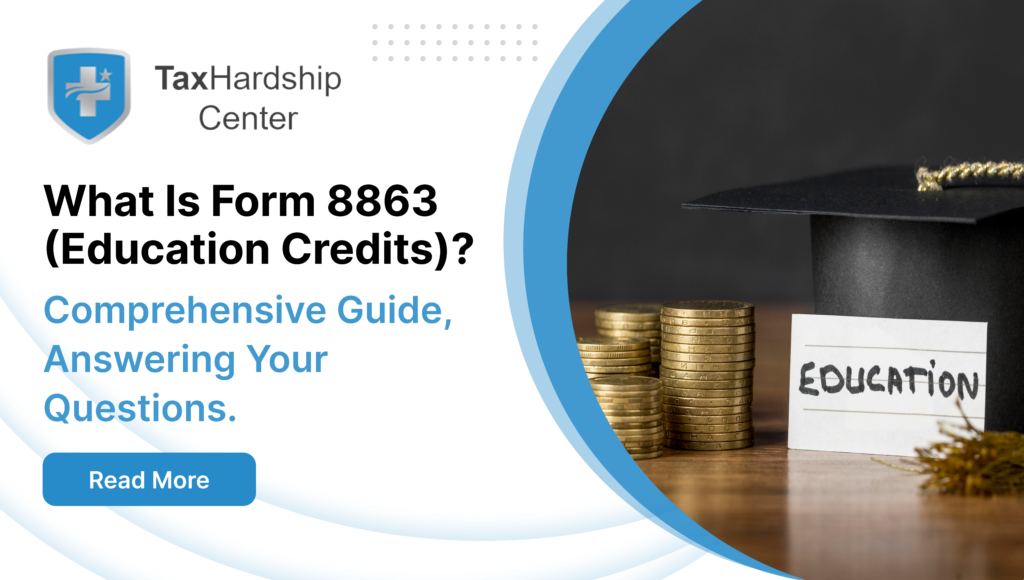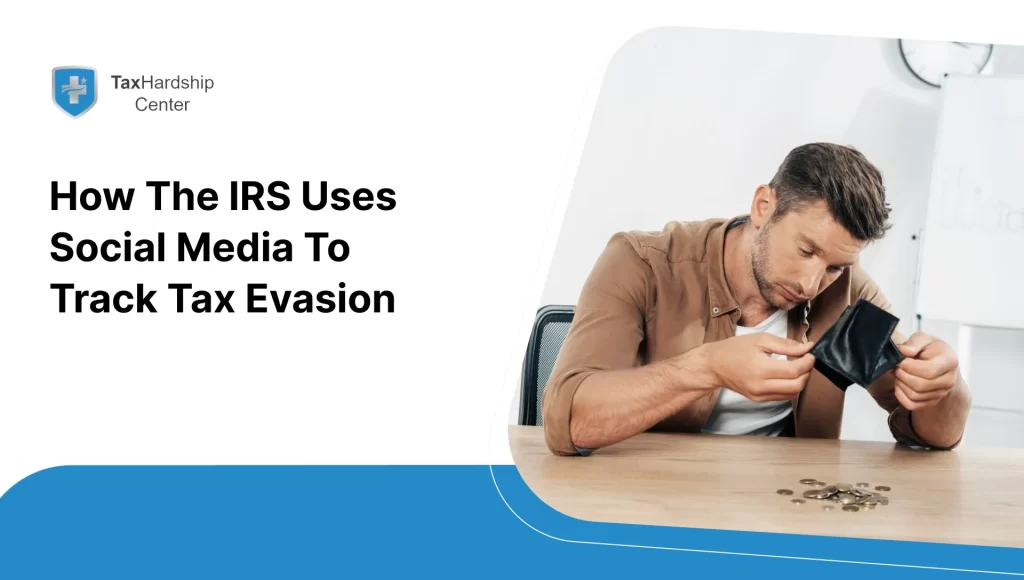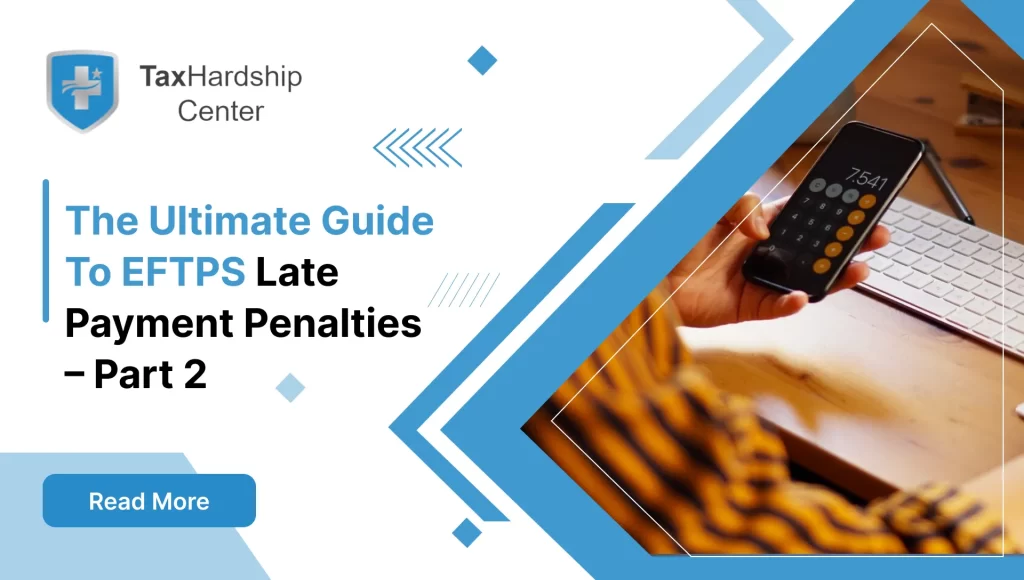Understanding how to optimize your tax return can lead to significant tax benefits, especially regarding education credits. One primary tax form many taxpayers encounter is Form 8863, which is dedicated to education credits. Let’s break down what this form is about and how to make the most of it.
What is Form 8863?
If you hope to claim education credits on your tax return, you must become familiar with IRS Form 8863. This is the tax form used to calculate and claim education tax credits offered by the federal government. Completing this form may reduce your tax liability if you, your spouse, or a dependent enrolled in an eligible educational institution and incurred qualified education expenses during the tax year.
Unlock Your Educational Tax Benefits with Tax Hardship Center
Let Tax Hardship Center guide you through the intricacies of Form 8863, ensuring you capitalize on every educational credit you deserve. Our expert team eliminates the hassle and maximizes your savings. Say goodbye to confusion and hello to peace of mind as we navigate the complexities of education credits on your behalf. Trust us to secure your tax advantages, making higher education costs more manageable.
Tax Form 8863 American Opportunity Credit (AOTC)
Form 8863 is essential for taxpayers seeking to lower their tax bill through education-related tax credits. The American Opportunity Tax Credit (AOTC) is one of the primary incentives accessed through this form. The AOTC’s role in the spectrum of tax credits is pivotal as it directly targets the financial burden associated with post-secondary education.
What is the American Opportunity Credit?
The American Opportunity Credit is a federal tax credit designed to alleviate the financial strain of the costs associated with the first four years of post-secondary education. This education credit is particularly beneficial as it is partially refundable, meaning eligible taxpayers can get back money without tax liability.
The AOTC covers tuition, necessary course materials, and fees. Notably, up to $2,500 of the credit is refundable per eligible student. Therefore, if the credit brings the tax owed down to zero, the taxpayer could be eligible to receive 40% of the remaining amount of the credit (up to $2,500) as a refund.
Who is eligible for the American Opportunity Credit?
Determining eligibility for the AOTC involves several vital criteria. Firstly, the credit is aimed at students who still need to complete the first four years of post-secondary education at the beginning of the tax year and are enrolled at least half-time in a program that leads to a degree, certificate, or another recognized education credential.
The student must have been enrolled in a program eligible for the credit for at least one academic period beginning in the tax year. The credit may only be claimed for four tax years per eligible student and cannot be claimed for a student convicted of a felony drug offense.
To claim the AOTC, the taxpayer’s modified adjusted gross income (MAGI) must be below a certain level. For a single filer, the AOTC begins to phase out at a MAGI of $80,000 and is completely phased out at $90,000. For those who are married and filing jointly, the phase-out begins at $160,000 and ends at $180,000. These income thresholds are set by the Internal Revenue Service (IRS) and can be adjusted, so it is vital to check for the most current figures.
Tax Form 8863 Lifetime Learning Credit (LLC)
For those seeking educational tax credits who may not qualify for the American Opportunity Tax Credit (AOTC), Form 8863 provides access to the Lifetime Learning Credit (LLC). This education credit is essential in the U.S. tax system as it offers a broader range of applicants the chance to claim educational tax benefits. Importantly, it can be claimed unlimited times throughout a taxpayer’s life.
What is the Lifetime Learning Credit?
The Lifetime Learning Credit is a non-refundable tax credit that covers some of the costs associated with post-secondary education and fosters lifelong learning. It is particularly beneficial for those looking to improve their job skills or change careers, as it can be used for undergraduate, graduate, and professional degree courses and continuing education programs.
For each tax year, the LLC allows taxpayers to claim a credit of 20% of the first $10,000 in qualified education expenses, effectively providing a benefit of up to $2,000 per tax return. What distinguishes the LLC from AOTC is its availability beyond the first four years of post-secondary education and its need to limit the number of years it can be claimed. It can thus support taxpayers through multiple stages of their education journey, from the first bachelor’s degree to post-graduate degrees and beyond.
Who is eligible for the Lifetime Learning Credit?
The LLC’s eligibility is broader than that of the AOTC. Students do not need to pursue a degree or other recognized education credentials or be enrolled at least half-time. This means the LLC can benefit many learners, including those taking a single course, by developing or improving their job skills.
Individuals who pay for qualified tuition and related expenses at an eligible educational institution can claim the credit, making it accessible to full-time and part-time students. However, as is familiar with tax credits, there are financial limitations; the ability to claim the Lifetime Learning Credit is reduced for taxpayers with a MAGI above a certain threshold, and it is eventually phased out entirely at higher income levels.
For the tax year 2023, the credit begins to phase out at $61,000 MAGI for individual taxpayers and is completely phased out at $71,000. For married couples filing jointly, the phase-out starts at $122,000 and ends at $142,000. These figures are periodically updated to reflect changes in the economy and the tax code, so taxpayers should verify the current limits when preparing their tax returns.
What are the income limits for education credits?
Understanding the income limits is crucial when planning to take advantage of education credits like the American Opportunity Credit (AOTC) and the Lifetime Learning Credit (LLC). These credits are intended to assist taxpayers with higher education costs; however, income restrictions determine eligibility and the amount of credit you can claim.
The income limits are based on your modified adjusted gross income (MAGI) and can vary each year due to tax law changes or adjustments for inflation. For instance, for the AOTC, single filers with a MAGI up to $80,000 can claim the full credit, but the credit begins to phase out above that amount and is completely phased out for individuals whose MAGI exceeds $90,000. These phase-out ranges for married couples filing jointly are between $160,000 and $180,000.
On the other hand, the Lifetime Learning Credit offers different phase-out thresholds. As of the latest tax year information, the LLC starts phasing out at $61,000 for individual filers and completely phases out at $71,000. The credit costs $122,000 and $142,000 MAGI for married couples filing jointly.
Given these figures are subject to annual adjustments, it’s recommended to consult the most recent tax tips provided by the IRS, utilize a tax calculator, or consult with a tax professional to determine your eligibility for these valuable tax credits.
How do you claim the education tax credit?
To claim education tax credits such as the American Opportunity Credit or the Lifetime Learning Credit, taxpayers must complete and submit IRS Form 8863 alongside their federal tax return.
Accurate documentation of your educational expenses is imperative. You will need to provide information such as the amounts paid for tuition, fees, and required course materials. In addition, you must be sure that the educational institution where these expenses were incurred qualifies under the IRS guidelines for education credits.
Remember that for the AOTC, expenses must be for education pursued in the first four years of post-secondary education, while the LLC is more flexible, covering undergraduate, graduate, and courses for job skills improvement without a limit on the number of years it can be claimed.
IRS Form 8863 Instructions
The IRS provides comprehensive instructions for completing Form 8863, which dictates the necessary steps to claim your education credits properly. Following these instructions carefully ensures you claim the correct amount and provide all the required information.
Taxpayers will need to provide specific details on Form 8863, including:
- The educational institution’s name and taxpayer identification number (SSN, EIN).
- The amounts paid for qualified tuition and related expenses.
- The amounts of any scholarships, grants, or refunds received may reduce the eligible credit amount.
Additionally, the taxpayer must decide which credit to claim for each student if eligible for both AOTC and LLC, as they can only claim one credit for the same student in the same year.
The accuracy of the information on Form 8863 is critical, as errors or omissions can delay the processing of your tax return or affect the amount of credit you receive. Taxpayers are encouraged to double-check their information against tuition statements (Form 1098-T) provided by educational institutions and to retain all records of educational expenses in the event of an IRS inquiry.
Eligibility Criteria for Form 8863 Education Credits
Navigating the eligibility criteria for education tax credits can seem daunting, but taxpayers can efficiently determine whether they can benefit from them with the correct information and guidance. Several conditions must be met to be eligible for the education credits on Form 8863. Each credit has distinct requirements, but there are common factors that you must consider.
Enrollment at an accredited institution is a foundational requirement. The IRS recognizes expenses from institutions eligible to participate in a student aid program administered by the U.S. Department of Education, which typically includes most colleges, universities, and vocational schools.
Another key criterion is the type of expenses that qualify for the credit. For the American Opportunity Credit (AOTC), qualified education expenses include tuition and related expenses required for enrollment or attendance and course materials. For the Lifetime Learning Credit (LLC), the expenses must be paid for tuition and fees required for enrollment or attendance at an eligible institution. Note that room and board, transportation, medical expenses, and similar personal expenses are not considered qualified education expenses for either credit.
Income Thresholds and Modified Adjusted Gross Income (MAGI)
The eligibility for education credits is partly contingent on your modified adjusted gross income (MAGI). The AOTC and LLC have income limits that phase out the credit for higher-income earners. Your MAGI is essentially your adjusted gross income (AGI) with certain deductions and exclusions added back in.
To correctly calculate your MAGI for education credits, you may need to add back to your AGI certain deductions, such as student loan interest, the foreign-earned income exclusion, the foreign housing exclusion or deduction, the exclusion for income for residents of American Samoa, and the exclusion for income from Puerto Rico.
Because these income phase-out ranges are adjusted for inflation and can change yearly, using the most current information is essential when determining your eligibility. An accurate calculation of your MAGI is critical to understanding whether you can claim the full credit, a reduced credit, or no credit at all.
Tax Filing Status and Education Credit Eligibility
Your tax filing status plays a significant role in establishing your eligibility for education credits. The IRS provides different income phase-out ranges for various filing statuses. For example, if you’re filing as a single taxpayer, the income thresholds will differ from those for a married couple filing jointly.
It’s also important to note that if you’re married and filing separately, you’re generally disqualified from claiming the AOTC and LLC. Understanding how your filing status affects your education credit eligibility can help you make more informed decisions when preparing your tax return or planning for educational expenses.
Accredited Institutions and Qualifying Education Programs
Verifying that the educational institution where you or your dependent is enrolled is accredited and eligible according to IRS standards is paramount when claiming education credits. Only institutions that are certified and recognized by the Department of Education qualify for purposes of the education credits.
Qualifying education programs are also important in determining eligibility. For the AOTC, the student must pursue a degree or other recognized education credential and be enrolled at least half-time for at least one academic period during the tax year. For the LLC, the credit is broader, allowing for a wider variety of courses to acquire or improve job skills.
Costs Associated with Filing Form 8863
When taxpayers prepare to file their tax returns, understanding the potential costs of filing Form 8863 for education credits is essential for budgeting. While the form itself does not inherently come with a filing fee from the Internal Revenue Service (IRS), some indirect costs can be associated with filing this form.
Firstly, if you plan to hire a tax professional or accountant to manage your taxes, there will likely be a fee for their services. The complexity of your tax situation, including calculating and claiming education credits, can affect the overall cost. Tax professionals may charge more for the additional time and expertise required to accurately complete Form 8863 and optimize a taxpayer’s education credit claim.
Additionally, using tax preparation software can also incur costs. While some essential tax filing services are free, they often exclude forms like the 8863 from their no-cost versions. Taxpayers typically need to purchase a more advanced version of the software to include education credits in their tax return calculation.
Another potential cost is obtaining the necessary documentation to support your claim for education credits. You must gather financial records such as tuition statements (Form 1098-T), receipts for qualified education expenses, and records of scholarships, grants, or fellowships. If you need to request duplicate copies or official transcripts from the educational institution, there may be fees associated with procuring these documents.
Furthermore, an amended return is required because an error was made regarding the education credit on the original tax return. In that case, filing an amended return might incur additional costs. These could include extra service fees from a tax professional or additional charges from tax preparation software.
It’s also important to consider the time investment as an indirect cost. Gathering documentation, filling out the form, and ensuring all the correct data is reported can be time-consuming, which can be an opportunity cost, especially for those who are self-employed or run a business.
In the event of an audit or if the IRS finds errors, additional costs may be involved, including potential penalties and interest. Ensuring that Form 8863 is accurately completed can help avoid such costly consequences.
Conclusion:
Understanding and maximizing education tax credits can significantly benefit taxpayers, particularly those investing in higher education or lifelong learning. Form 8863 serves as a gateway to claiming these credits, offering opportunities to reduce tax liabilities and increase refunds. Whether it’s the American Opportunity Credit (AOTC) or the Lifetime Learning Credit (LLC), taxpayers can leverage these credits to alleviate the financial burden of educational expenses and foster personal and professional growth. By familiarizing themselves with eligibility criteria, income thresholds, and the filing process, taxpayers can optimize their tax returns and secure valuable tax benefits.
Why Tax Hardship Center?
1. Hassle-Free Assistance:
Say goodbye to sleepless nights and endless tax-related stress. At the Tax Hardship Center, we believe in simplifying the complex. Our team of experts is dedicated to guiding you through every step of the process, ensuring that your tax concerns are met with precision and care.
2. 14-Day Money Back Guarantee:
We’re so confident in our ability to ease your tax worries that we offer a 14-day money-back guarantee. If, for any reason, you’re not satisfied with our service, we’ll gladly refund your investment. Your peace of mind is our top priority!
3. Free Consultation:
Are you curious about how we can transform your tax experience? Book a free consultation now! Our team will assess your situation, answer your questions, and provide free insights tailored to your needs.
4. Nationwide Coverage:
No matter which corner of the United States you call home, the Tax Hardship Center covers you. We proudly serve all 50 states, bringing our expertise to your doorstep. Wherever you are, our commitment to excellence follows.
FAQs:
1. What is Form 8863, and why is it essential?
Form 8863 is a tax form used to calculate and claim education tax credits offered by the federal government, such as the American Opportunity Credit (AOTC) and the Lifetime Learning Credit (LLC). Taxes can reduce liabilities by claiming credits for qualified education expenses incurred during the tax year.
2. Who is eligible for the American Opportunity Credit (AOTC)?
Eligibility for the AOTC is based on several criteria, including enrollment in an eligible educational institution, pursuing a degree or recognized education credential, enrollment at least half-time, and meeting income requirements. The credit is phased out for higher-income taxpayers.
3. What is the Lifetime Learning Credit (LLC), and who can claim it?
The LLC is a non-refundable tax credit available to taxpayers who pay qualified education expenses for themselves, their spouses, or their dependents. Unlike the AOTC, the LLC does not have enrollment or degree requirements and can be claimed for unlimited years.
4. What are the income limits for education credits?
Income limits for education credits, such as the AOTC and LLC, are based on modified adjusted gross income (MAGI). These limits vary depending on filing status and can change annually. Taxpayers should consult the latest IRS guidelines to determine their eligibility.
5. How do you claim education tax credits using Form 8863?
To claim education tax credits, taxpayers must accurately complete Form 8863 and include it with their federal tax return. They should gather documentation of qualified education expenses and follow the IRS instructions for reporting expenses and calculating credits.








